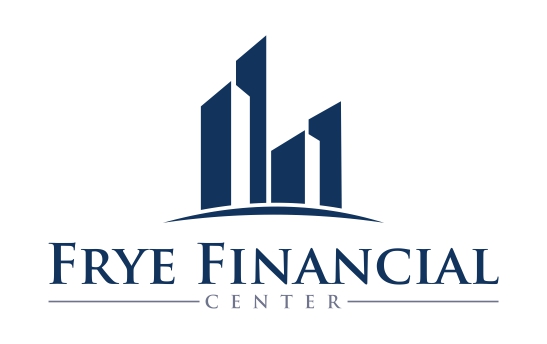Spring Cleaning for your Retirement Plans!
OK, so it’s only barely still Spring, but the concept holds true. This is a great time to review your retirement savings plans with your company’s financial advisor.
What do your house and your 401(k) have in common? Both may need some spring cleaning, according to our friends at American Funds.
A lot can change in a year. Your closet might be filled with clothes you no longer wear. Appliances might need fixing or replacing. Likewise, your 401(k) investments or contributions may no longer fit your retirement objectives.
“The circumstances of our lives are constantly changing,” says Ken Burdick, senior product specialist at American Funds. “So you want to check in from time to time to make sure your investment strategy still makes sense.”
That’s why it’s important to review your 401(k) at least annually to make sure you’re on track. The following six tips will help guide you through the process.
1. Mind Your Mix
Choosing a diversified investment mix for your 401(k) based on your goals, finances and risk tolerance is fundamental to smart investing.
When doing your 401(k) spring cleaning, check to see whether market changes during the year have left you over- or under-invested in a particular asset class. If so, it’s time to rebalance — buy more of some investments or sell others — to get realigned with your original plan.
How often should you rebalance? “A good rule of thumb is, if you are 5% to 10% off your target, readjust,” offers Charles Rotblut, editor of the American Association of Individual Investors Journal.
Target Date Fund
If the thought of rebalancing is too stressful or you simply don’t want to take on the responsibility, consider investing in a target date fund. The asset allocation in a target date fund grows more conservative as you approach retirement, and the rebalancing is done for you.
2. Do a Self Check
Have any major life events occurred over the course of the year that might have altered your retirement strategy? If so, you may want to adjust your investment mix accordingly.
3. Ramp Up Your Savings
When employees join a company, their employer will often automatically enroll them in a 401(k). While that’s definitely a good thing, some employers automatically set their employee’s deferral rate at around 3%, which is much lower than is generally recommended. Experts advise setting aside between 10% and 15% of your salary for retirement savings.
Contribution Rates
Raising your contribution rate can make a significant difference in the size of your nest egg. Let’s say you start contributing to a 401(k) at age 30 when you’re earning $50,000 a year. If you get raises of 3% a year, contribute 3% of each paycheck and the investment grows 7% annually, in 35 years you would have $305,917. If all else remained the same, and you chose to contribute 10% a year, in 35 years you would have $1,019,722.
“You can’t control how the market performs,” Rotblut says. “You can control how much you save for retirement.”
Take a minute to look at your current savings rate and then determine whether you could be saving more money without putting unnecessary pressure on yourself or your budget. Contribute at least enough to be eligible for your company’s match. For 2017, the maximum contribution to a 401(k) allowed by the IRS is $18,000, and $24,000 if you are 50 or older.
When you get a raise, give your retirement plan a raise too. Take a percentage of your salary increase and add it to your 401(k). “Increasing your contribution rate by just 1% a year can go a long way — and you won’t feel it as much at the time of an annual pay increase,” emphasizes Burdick.
4. Consider Your Options
Review your plan’s investment options, preferably with the financial professional overseeing your company’s plan. “Most plans offer a variety of fund choices with different characteristics,” Burdick explains. “Long-term results, fees and risk-return characteristics should factor into your investment selection process.”
In addition, take the time to look at the prospectuses of your mutual funds, Rotblut suggests. See if any of the funds’ objectives and investment strategies have been amended in the past 12 months. If so, that fund may no longer be right for you.
5. If You Haven’t Already, Ask About a Roth
An increasing number of employers are allowing 401(k) participants to make Roth 401(k) contributions. It’s worth investigating whether your plan provides the option to open a Roth account.
Unlike a traditional 401(k), a Roth lets you contribute after-tax dollars, but qualified withdrawals are tax-free when you retire. If you think you will be in a higher tax bracket in retirement than you are today, a Roth 401(k) could be the way to go.
6. Dream Big
“When it comes to your retirement goals, dream big,” Burdick urges. “But at the same time, take ownership of the process, use your resources and check-in regularly.”
Reach out to your plan’s financial advisor to help you clarify your objectives and outline the best way to achieve them. At the same time, take ownership of the process. Use your resources and check in regularly.
The bottom line: Achieving retirement security requires being proactive, and engaging with your retirement plan at least once a year is an essential part of the process.
Investments are not FDIC-insured, nor are they deposits of or guaranteed by a bank or any other entity, so they may lose value.
Investors should carefully consider investment objectives, risks, charges and expenses. This and other important information is contained in the fund prospectuses and summary prospectuses, which can be obtained from a financial professional and should be read carefully before investing.


